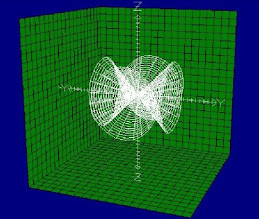Some 30 years earlier, the people of Annonay witnessed the first public hot-air balloon flights, as it was the hometown of the Montgolfier brothers. Buth both brothers died before Auguste was given the privilege to nest in Annonay. As last one, Joseph-Michel died almost one year earlier. Auguste surely benefited from the scientific entrepreneurial spirit of that town.
 |
| Stanislas College caption |
Auguste Bravais is best known for pointing out that there are in total 14 types of crystallographic lattices. His ordering and denomination of lattices is still in use today.
In his young years, his main interest was in meteorological observations. At age 10, he climbed alone the Pilat mountain hoping to better understand cloud formation. Later in his life, together with two other scientists, he participated in the first scientific mission at the top of the Mont-Blanc, as well as in numerous observations on the Faulhorn with his brother Louis.
With Louis, he also shared a passion for botany, which was given to them by their father. Together, they investigated the arrangement of leaves on the stem of plants, which shows Fibonacci series in their spiraling. They came to the conclusion, that the leaves were never really growing vertically of each other. There was a prevalent tendency that two successive leaves were following each other on a spiral at 137.5 degrees (or, which is the same, at 222.5 degrees counter-wise). This result they published in 1835.
In 1868, Wilhelm Hofmeister gave an explanation for that angle, now known as Hofmeister's rule: as the plant grows, each new leave originates at the least crowded spot. A very natural law...
Sadly, for the last ten yours of his life, he lost his intellectual capacities, being aware that he could not fulfill the redaction of all his scientific work. He was said to start work at 4 o'clock in the morning with a lot of caffeine The lack of sleep surely didn't arrange things. He died March 30, 1863 near Versailles.






